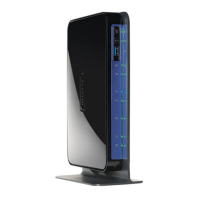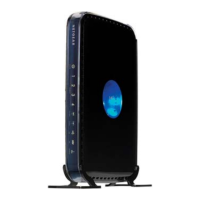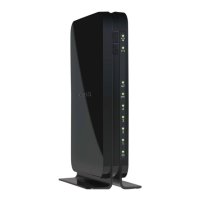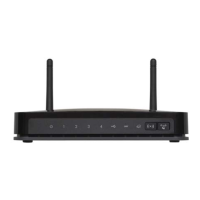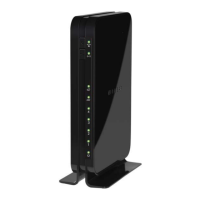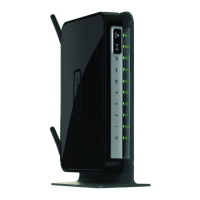Advanced Settings
105
N600 Wireless Dual Band Gigabit ADSL2+ Modem Router DGND3700v2
4. Click Apply to save your changes.
5. Verify connectivity across the LANs.
A computer on any wireless or wired LAN segment of the wireless modem router should
be able to connect to the Internet or share files and printers with any other wireless or
wired computer or server connected to the other access point.
Port Forwarding and Triggering
By default, the wireless modem router blocks inbound traffic from the Internet to your
computers except replies to your outbound traffic. You might need to create exceptions to
this rule for these purposes:
• To allow remote computers on the Internet to access a server on your local network.
• To allow certain applications and games to work correctly when their replies are not
recognized by your wireless modem router.
Your wireless modem router provides two features for creating these exceptions: port
forwarding and port triggering. The next sections provide background information to help you
understand how port forwarding and port triggering work, and the differences between the
two.
Remote Computer Access Basics
When a computer on your network needs to access a computer on the Internet, your
computer sends your wireless modem router a message containing the source and
destination address and process information. Before forwarding your message to the remote
computer, your wireless modem router has to modify the source information and create and
track the communication session so that replies can be routed back to your computer.
Here is an example of normal outbound traffic and the resulting inbound responses:
1. You open a browser, and your operating system assigns port number 5678 to this
browser session.
2. You type http://www.example.com into the URL field, and your computer creates a web
page request message with the following address and port information. The request
message is sent to your wireless modem router.
Source address. Your computer’s IP address.
Source port number. 5678, which is the browser session.
Destination address. The IP address of www.example.com, which your computer finds
by asking a DNS server.
Destination port number. 80, which is the standard port number for a web server
process.
3. Your wireless modem router creates an entry in its internal session table describing this
communication session between your computer and the web server at www.example.com.
Before sending the web page request message to www.example.com, your wireless
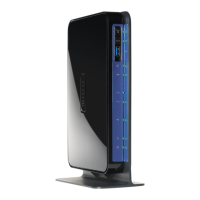
